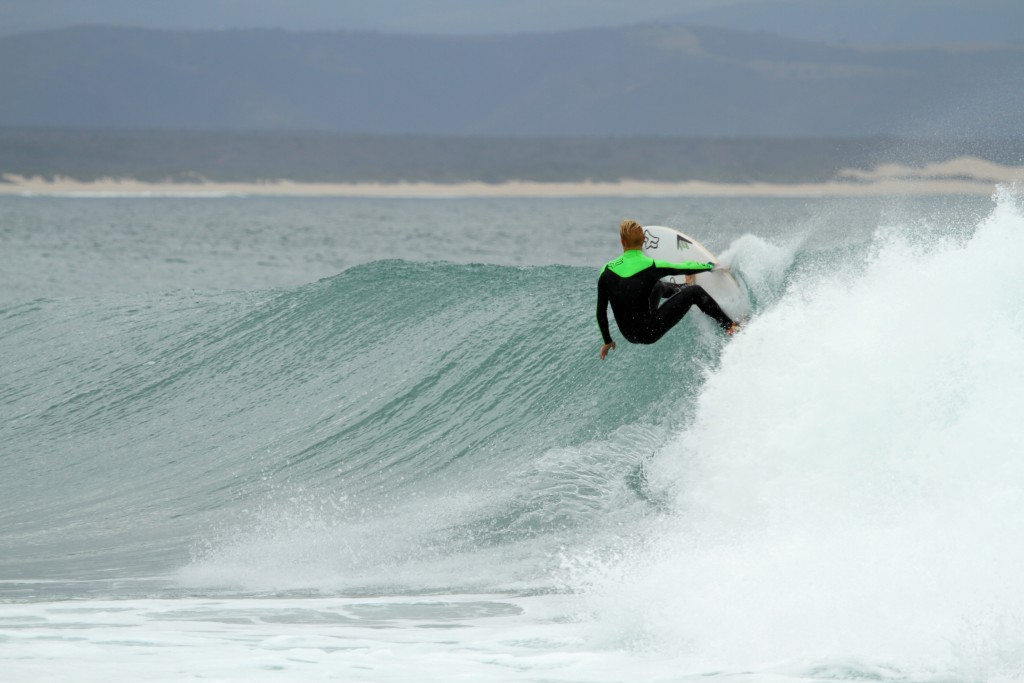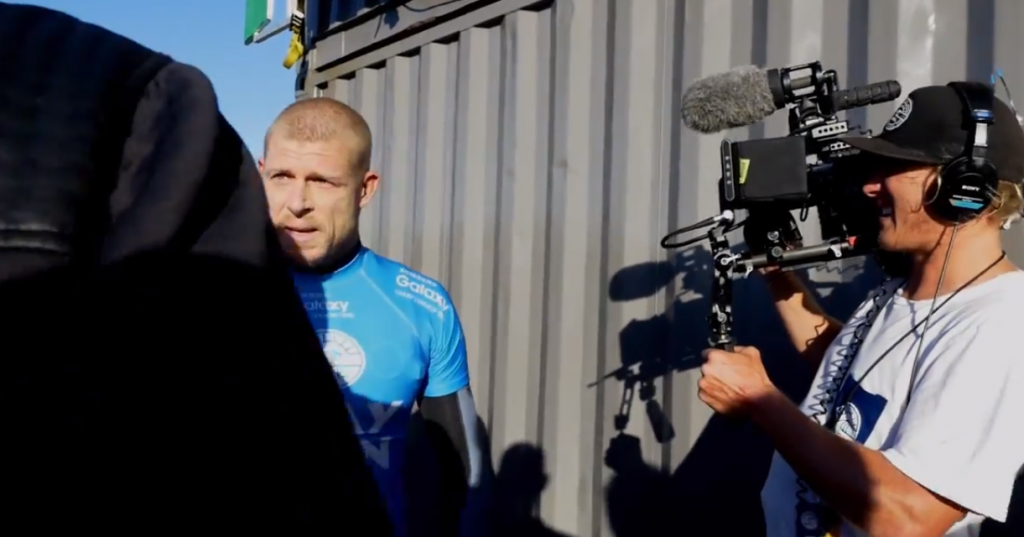Last year's J-Bay wildcard Dylan Lightfoot on the effectiveness of the Great White deterrent…
I’ve never, ever, wanted to wet a rail at J-Bay, in a country where Great Whites have been protected since 1991.
Sharks? Who needs ’em?
I’ve also struck the south-west corner of Australia and anywhere from Ballina to Byron Bay off my list of places to surf. Visit, sure. I like to surf but I also like to breathe air and walk on two lil legs.
But, on that final day of the J-Bay Open, with fast runners hitting the reef just so, backing off enough to strike a lip or get theatrical with an open-face cutdown, I started thinking, maybe the shark thing ain’t so bad there. I could always crawl onto the rocks if I saw a fin too close.
And, then, Mick.
And it reminded me of the fatal attack there in 2013 when 74-year-old swimmer Burgert Van De Westhuizen, who’d swum the same lineup, same route for the previous 20 years, was hit by a White so big it looked it was two of ’em and dragged out into deep water. A local surfer was in a sea kayak and belted the shark over and over with his paddle but it wouldn’t release the body.
And it reminded me of the time the local surfer, Warren Dean, who used to beat Andy Irons at J-Bay every year, was bumped by a Great White in the same way as Mick (but no cameras).
And when Taj Burrow was terrorised by a metre-high fin during the event there in 2003.
And I wondered, how does it affect a surfer, a very good surfer, someone who’s made surfing their job, who actually lives in Jeffreys Bay? Do they just hang up the spurs?
I called last year’s J-Bay Open wildcard and WSQ surfer, Dylan Lightfoot, for his angle.
BeachGrit: Where were you when the shark hit Mick?
Dylan: I’d got on a flight the day before the final and I saw it for the first time the next day. It was wild. But, to be honest, the shark didn’t show any intent to bite him. It just came to check him out, got caught in his leash, and took off. If it was going to bite him, it would’ve just taken him.
BeachGrit: How does it affect you, as a local there?
Dylan: There’s sharks there all the time. I couldn’t be bothered.
BeachGrit: What are your experiences with sharks there?
Dylan: I’ve seen a shark cruise the Supers lineup, not even five metres away from me, just cruising, taking it easy. What was scary was when the swimmer was taken and properly eaten two years ago and the shark wouldn’t let go of the corpse. Ya. That was scary. They’re out there and you have to be on the lookout, for sure.
BeachGrit: Y’still going to hit the lineup for earlies?
Dylan: I don’t think it will. Both shark incidents we’ve had in Jefreys Bay have both been around lunch time or towards the evening. I feel those late evening surfs are the most sketchy for sharks.
BeachGrit: And, therefore, no more lates?
Dylan: Definitely. Especially if something does happen and it’s getting dark and no one will be able to help you out.
BeachGrit: What’s the mood like among your pals and the rest of the locals?
Dylan: A lot of people were very shaken up. My Dad is neurotic about sharks so for him to see that he was pretty disturbed. I still don’t think it’ll stop us from surfing at Supers. My mates and I joke that it was the best way to deter crowds from coming to J-Bay.
BeachGrit: When I interviewed you last year, you spoke about the White cruising the lineup a couple of months before the event and how everyone at Supers climbed up onto the rocks. And you got circled in Durban, too. What happened in that instance?
Dylan: Ha ha ha! Yeah! That was the last time I saw a shark out there. I’ve been circled up the west coast, about two hours past Cape Town. I was surfing a beachie with my mate and my brother, water was not deeper than head height, it was murky and it was a dark cloudy day. This was also in the evening. My mate had just caught a wave and my brother was hanging on the inside so I was out the back alone. And this shark, not big, about two metres, came from the right, shooting past me and it turned around and came from the opposite side and started to circle me in a fast and aggressive way. Luckily, a wave popped up and I caught it in.
BeachGrit: How do you deal with the real possibility of getting hit one day?
Dylan: I don’t think about it. You have to be vigilant and hope that nothing happens. But, I suppose, if you had to be bitten, at least you were doing something that you loved. So it’s worth the risk in the end.







